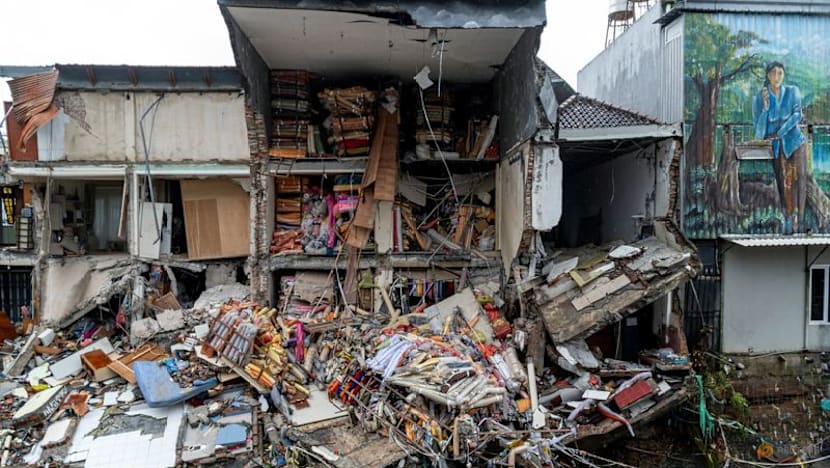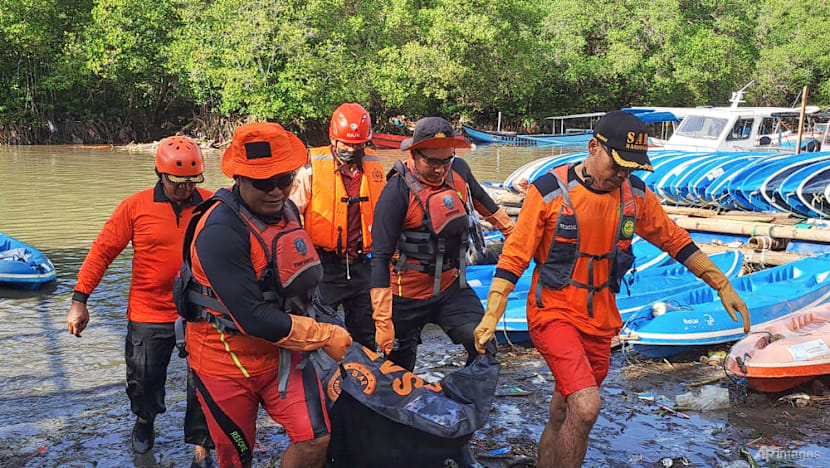Poor waste management, land conversion worsened deadly Bali floods, says Indonesia’s environment minister
The floods have killed 16 people in the province. Bali Governor I Wayan Koster denied land conversion in Denpasar caused the floods, arguing the issue stemmed from river flows from neighbouring districts.

DENPASAR: Clogged drains and land conversion to hotels and villas worsened flash floods that struck Bali this week, said Indonesia’s environment minister as the country’s disaster agency announced the death toll had risen to 16.
Initial assessments indicate that clogged drainage systems, following two days of intense rain, triggered the flooding in Denpasar, said environment minister Hanif Faisol Nurofiq in Jakarta on Thursday (Sep 11).
Poor waste management worsened the disaster, Hanif said. “The floods were aggravated by extraordinary piles of garbage clogging the drains,” Hanif said, as reported by media outlet Bisnis. “This tragedy must serve as a lesson.”
While local governments are working to clear the waste backlog, Hanif admitted the problem cannot be solved quickly.
He also pointed to rapid land conversion from rice fields and green spaces into hotels, villas and cafes catering to tourism as a key factor undermining Bali’s natural water absorption capacity.
“We must not be reckless. Once the landscape is disrupted, nature recalibrates itself through disasters like this,” he said, urging authorities to adopt more sustainable land-use planning.
Bali Governor I Wayan Koster rejected claims that land conversion in the provincial capital Denpasar directly caused the flooding, saying such developments were concentrated in North Kuta (Badung) and parts of Gianyar.
“That’s not the case. Land conversion is in Badung and Gianyar. In North Kuta the rivers flow downstream to Denpasar, so this is a river flow issue, not land conversion in the city,” the Indonesian Democratic Party of Struggle (PDI-P) politician told CNN Indonesia during an inspection in Denpasar.
However, environmental group Walhi Bali reported that between 2018 and 2023, land degradation across the Sabagita metropolitan area — which covers Denpasar, Badung, Gianyar and Tabanan — reached 3 to 6 per cent, steadily reducing agricultural land.
SIXTEEN PEOPLE DEAD, ONE MISSING
The Meteorology, Climatology and Geophysics Agency (BMKG) said the floods were intensified by heavy rainfall associated with the equatorial Rossby wave, which persisted for more than 24 hours from Tuesday morning.

Bali’s disaster agency (BPBD) recorded over 120 flood points and 18 landslides across the island. Denpasar was the worst hit, with 81 flood locations. Other affected districts included Gianyar (14), Badung (12), Tabanan (8), Karangasem (4), Jembrana (4) and Klungkung (1).
Most of the landslides occurred in Karangasem (12), followed by Gianyar (5) and Badung (1).
The National Disaster Mitigation Agency (BNPB) confirmed the death toll of 16 on Thursday night after search teams recovered the body of one of two people reported missing.
“One person remains unaccounted for,” BNPB spokesman Abdul Muhari told reporters, as quoted by state news agency Antara.
The fatalities included 10 people in Denpasar, three in Gianyar, two in Jembrana and one in Badung. Authorities have declared a seven-day state of emergency beginning Sep 10.
The Indonesian Army has deployed more than 300 personnel for the evacuation of Bali flood victims, Brigadier General Wahyu Yudhayana, head of the Indonesian Army Information Service, told Antara on Friday.
They have been deployed at various locations along with the National Police, National Search and Rescue Agency (Basarnas) and other relevant agencies, he said.
Their duties include searching for missing people and clearing mud and debris, he said.
BNPB's Abdul said conditions on the island were “gradually returning to normal” as floodwaters subsided in most areas. Search teams remain focused on locating the missing person, clearing debris and pumping out inundated sites, including the basement of Badung Market.
BNPB said 562 residents were evacuated to shelters, including schools, village halls and community centres.
To support recovery efforts, BNPB dispatched aid supplies including 200 blankets, 200 mattresses, 300 food packages, 50 family tents, two large refugee tents, one rubber boat and three water pumps.
Authorities also pledged cash assistance to help families rehabilitate homes both lightly and severely damaged by the disaster.















